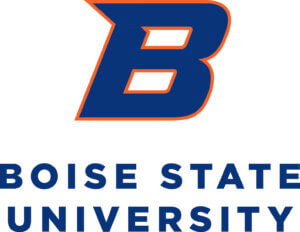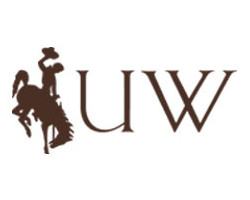Advanced nuclear energy will likely be a key competitive advantage in navigating the new frontier of competitiveness and economic security. States that are “first movers” in deploying those technologies, and leading in the novel industrial applications of them, will have a competitive edge in the new frontier. Collaboration among those states – their governments and agencies, academic institutions, entrepreneurs, and businesses, may be especially helpful. This “regional to global” approach – regional partnerships to capture global advantage in the new frontier, will be a competitive advantage and an asset to stakeholders in those states.
Frontiers Initiative has several synergistic efforts, including the Frontiers Project, managed by the Atlantic Council to convene and connect major stakeholders in our region, nationally and globally; a Collaboration involving key industry, government and academic stakeholders in our region; and Frontiers development activities that catalyze and support business and technical development efforts with key stakeholders.
The Frontiers Collaboration enables transformational economic development and global positioning based on low-emissions industrial and business activity by sharing knowledge, approaches, and lessons learned in advanced nuclear energy and associated industrial activity. The Collaboration is also a resource for communities to share best practices, strategies, lessons learned, and other assistance as they navigate the new global frontier of energy and competitiveness and prepare for advanced nuclear energy deployment.
The Frontiers Project Meeting looks at Alaska’s potential to become a first-mover state in advanced nuclear and at how Alaska can meet increased global demand for low-emissions manufacturing. Courtesy of the Atlantic Council, this panel from the Atlantic Council Alaska Event in October 2023 features business, university and economic development leaders across Alaska as well as BWXT leadership.
“Looking at Alaska’s potential leadership in this area … there again are a lot of opportunities in the technology fit. (It) can be very good, especially the micro reactors here. The potential benefits for the communities, the end users, for both industry, the military state, region and the nation must be considered. … the views of the communities and stakeholders are critical. They have to be part of this process.”
— Michael Goff, Principal Deputy Assistant Secretary for Nuclear Energy, Office of Nuclear Energy, US Department of Energy
“Energy is the lifeblood of our operations. So just like our Alaskan cities, or communities and villages that depend upon it, so does every facet of our military operation. …but let’s take a moment to ponder, are we keeping pace with the shifting energy dynamic? And then shift our gaze to regions like Alaska in the Arctic, and it’s evident to me more and more every day that these areas demand more than just attention. They require a dedicated focus. … and the stakes for the military are similar, very high in this region, one energy lapse and we risk both our operations and our personnel.”
— Colonel Daniel Craig, Director of Logistics, Engineering, and Health Services, Alaska NORAD Region and Alaskan Command, Joint Base Elmendorf-Richardson, United States Air Force
“…the governor certainly recognizes that potential for this technology to really be a game changer in Alaska and in a number of fashions. … So I think when you see that kind of alignment across communities, across stakeholders, across the resource industries, I think that’s where you can really create the environment to really move these this technology forward and certainly to send a signal to the industry that Alaska is a prime opportunity to deploy this technology.”
— Andrew Jensen, Policy Advisor, Food and Energy Security, Office of Governor Dunleavy
“The economic potential surrounding nuclear reactors whether it be small, micro to large … there’s just so much demand for energy with the growth not just in Idaho, (but) regional, global. … The applications are amazing for innovation and enabling innovation. … So how do we understand what products might we make in the region or consume in the region or export to other states or abroad? And what does that mean for workforce? What is it going to demand of universities and colleges to develop the workforce and the capability to implement and be a leader in this area? So just tremendous opportunities…”
— Tom Kealey, Director, Idaho Department of Commerce
“Right here in Alaska we have the opportunity to produce 47 of the 50 critical minerals, rare earth elements. But you have to have affordable energy to get there. And we have to have low emission energy to get there. So I think … for us, for Alaska, it’s a transition of the entire economy. And it’s not tomorrow, but it’s coming every day.”
— Pat Pitney, President, University of Alaska System
“Nuclear is valuable … everything that we do in the modern DoD requires electricity and energy. …it’s not just the weapons, the radars, just getting drinking water. Everything that we need to do … the targeting software, everything requires power. So we are hoping that Project Pele can be the pathfinder to allow us to move to nuclear power because the energy density that nuclear provides is really like a science fiction capability. … It’s 2 million times as energy dense as diesel, so this is the opportunity…”
— Jeff Waksman, Program Manager, Strategic Capabilities Office, Office of the Secretary of Defense, US Department of Defense
“It’s important that we keep collaborating together … we will probably see in Alaska, the legislature have hearings and educational type seminars and things that will be led by a handful of those that are really aware of the benefits for Alaska. … we need to look at what we can do for our very remote areas in our state. …I just see so many possibilities.”
— The Hon. Nancy Dahlstrom, Lieutenant Governor, Alaska
“When you look at Frontiers, we look at INL … as a regional resource, including (for) Alaska. … There are a lot of commonalities with this region that that everybody’s talked about; rural needs for remote power … state governments that are very open to nuclear energy and what it offers and then the … real opportunities in a new energy environment that a clean energy source, like nuclear, offers.”
— Jess Gehin, Associate Laboratory Director, Idaho National Laboratory
“Having the matching funds from the governor was important, having an Energy Authority that’s very lean forward and getting the project done the right way the first time and then having Idaho National Lab involved as well as fostering that relationship really connecting the micro reactor vendor BWXT to the state and then determining what the different phases needed to be.”
— Joseph Miller, President, BWXT Advanced Technologies LLC
“I would like to see multiple micro reactor manufacturers that are really robust and I would like to see multiple vendors for everything that those same reactor manufacturers need. …keep in mind this is for national security. … It’s a heavy lift … I don’t think it’s going to take a tremendous amount of people. It just takes the right people.”
— Mike Wandler, President, L&H Industrial
Courtesy of the Atlantic Council, this panel from the Frontiers Project in October, 2022 features business, university and economic development leaders across Wyoming as well as TerraPower leadership.
“Wyoming has a high energy IQ”
— Chris Levesque, President and CEO, Terrapower
“I find my best talent in Wyoming”
— Mike Wandler, President, L&H Industrial
“We believe energy security is vital to the state”
— Donald Burkhart, Jr., Wyoming State Representative
“What got Wyoming to statehood was the fact that we could produce energy, built on transitions.”
— Donald Burkhart, Jr., Wyoming State Representative







